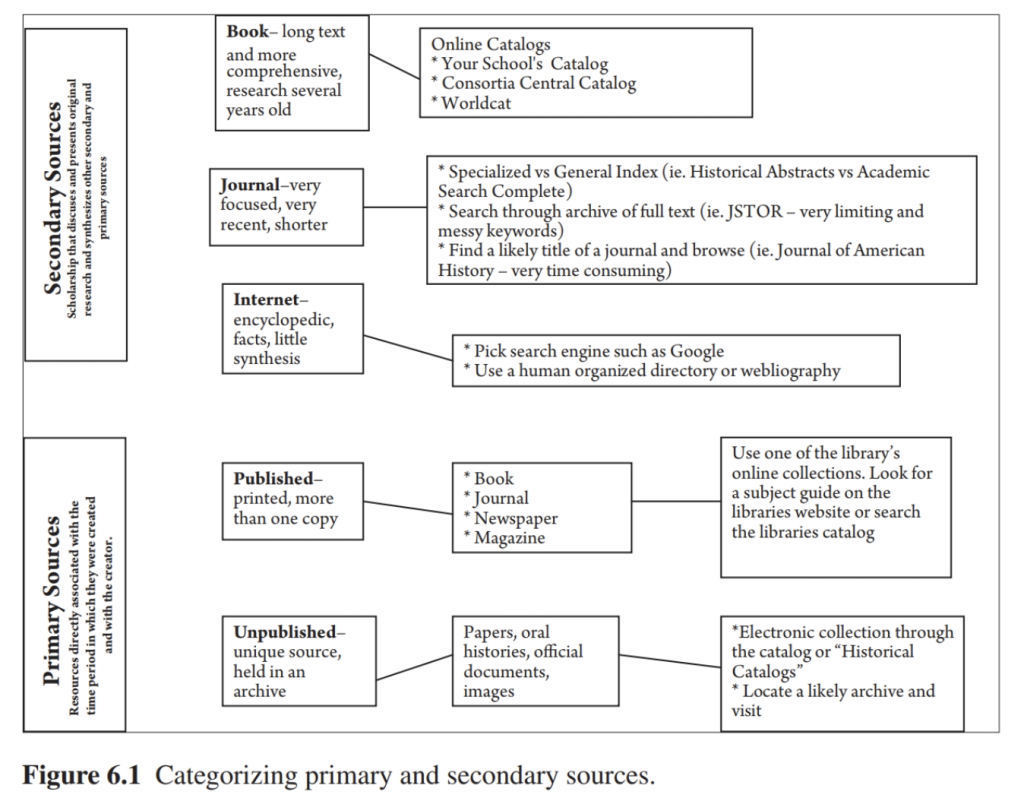4. Historical Primary Sources
Thinking about Primary Sources for a specific topic
Thinking about Primary Sources for a specific topic:
“Asking the following questions will help you think about what kind of evidence to look for and how to link your evidence directly to your research question.
- What types of primary materials might have been produced? Remember to think about both printed materials, such as documents, as well as physical representations of culture, such as artwork and architecture.
- Who would have produced these primary sources?
- Who would have used and/or critiqued these primary sources?
- When would these primary sources have been produced?
- Would these primary sources have been published, unpublished, or represented in another form (e.g., an audiotape of an interview)?
- What would historians of that period have used to do their research?
- Why does this source still exist? Why was it important enough for someone to preserve?”[1]
More information about locating primary sources is located in a later chapter but organizing and brainstorming the types of primary sources available about your topic can get you started.
“Dividing primary sources into published and unpublished sources will help you develop your search strategy (fig. 6.1). Published sources will be the easiest to locate through your library. These were mass-produced, so, at least at one time, more than one copy existed. You will probably be able to locate a copy to borrow through interlibrary loan or find a microfilmed copy of your printed primary source. Unpublished sources are typically one-of-a kind items and often held in a single location, such as a museum or archive, although some may have been microfilmed or digitized and made available on the Internet. Documents, diaries, busi-ness records, parish records, an individual’s papers, and photographs are all examples of unpublished primary sources.”[2]

Figure 6.1 Presnell, The Information-literate, 115.
